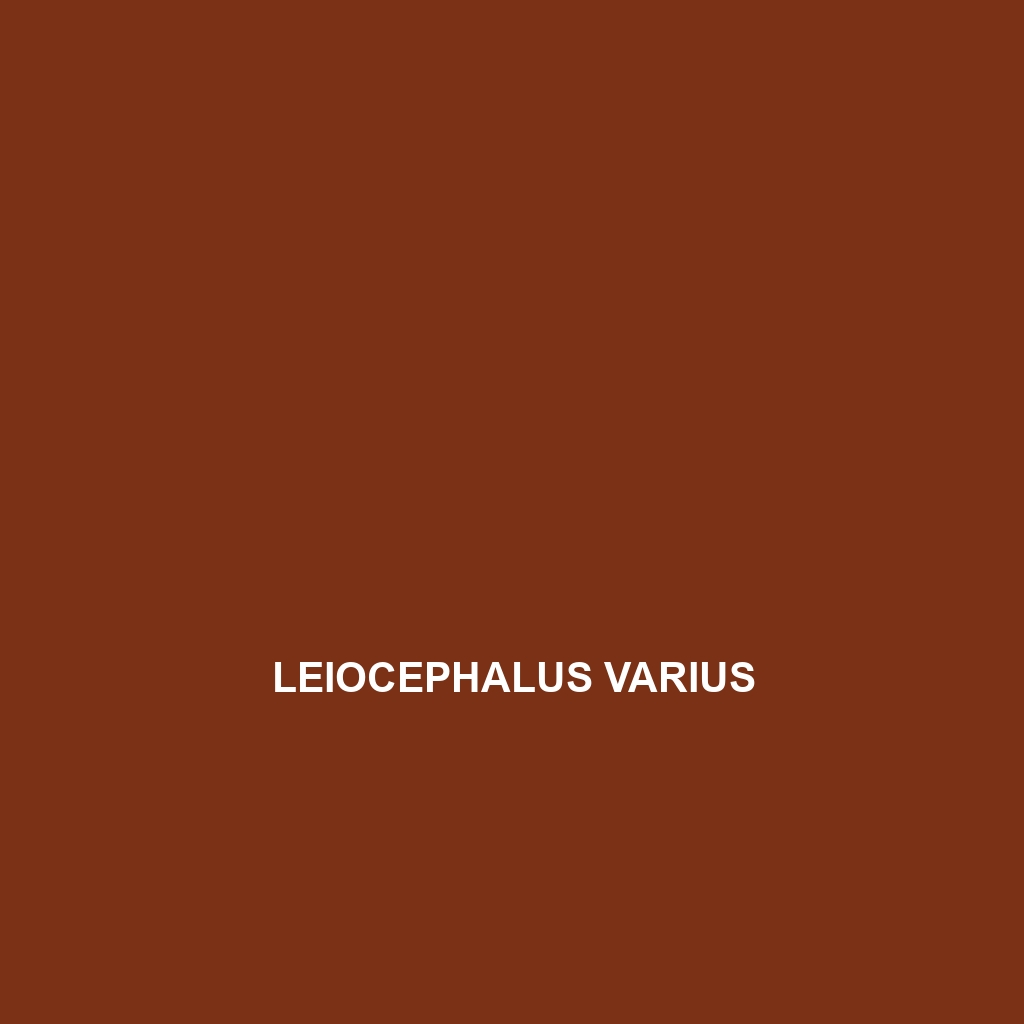Common Name
Leiocephalus varius
Scientific Name
Leiocephalus varius
Habitat
Leiocephalus varius, commonly known as the variable curlytail lizard, is primarily found in the Caribbean region, specifically on the islands of the Bahamas and parts of the Greater Antilles. These lizards thrive in a variety of habitats, including coastal regions, tropical rainforests, and open savannas. They are particularly adapted to arid and semi-arid environments, often favoring sandy soils and areas with abundant shrubbery. The warm climate and high humidity of these geographic regions provide ideal conditions for their survival, allowing them to bask in sunlight while maintaining their moisture needs.
Physical Characteristics
The Leiocephalus varius exhibits distinctive physical characteristics that make it easily recognizable. Adults typically reach lengths of 8 to 12 inches, with males generally being larger than females. Their appearance features a robust body, elongated limbs, and a long, pointed snout. The coloration of Leiocephalus varius is variable, ranging from light tan to rich brown with darker patterns, enabling them to blend seamlessly into their natural habitats. A fascinating trait is their curly tails, which are often seen held upright during foraging, contributing to their unique profile.
Behavior
Behaviorally, Leiocephalus varius is diurnal, primarily active during the day. Their social interactions are fascinating; they can often be spotted sunbathing on rocks or tree branches, and males are known to engage in territorial displays to ward off rivals. Although they do not migrate seasonally, they have been observed to maintain home ranges, with certain individuals displaying fidelity to specific areas. Mating rituals involve intricate displays of body posturing, where males may puff up their bodies and perform head bobbing to attract females, showcasing behaviors that intrigue researchers and enthusiasts alike.
Diet
The Leiocephalus varius is considered an insectivore, primarily feeding on a diverse diet consisting of insects such as crickets, beetles, and grasshoppers. However, they are also opportunistic feeders and may consume small fruits and flowers when available, exhibiting a degree of omnivorous behavior. Their foraging patterns involve actively hunting prey while maintaining vigilance against predators. This dietary flexibility allows them to adapt to varying food availability within their habitat.
Reproduction
The reproductive cycle of Leiocephalus varius spans from the late spring to early summer, with mating typically occurring shortly after the rainy season. Females lay clutches of 2 to 10 eggs in sandy nests, which they carefully conceal to protect against predators. The incubation period lasts approximately 6 to 8 weeks, after which hatchlings emerge, measuring about 3 inches in length. Parental care is minimal, as the young are independent and must fend for themselves immediately upon hatching. Observations indicate that females may compete for the prime nesting sites, providing insights into their reproductive strategies.
Conservation Status
According to the International Union for Conservation of Nature (IUCN), the current conservation status of Leiocephalus varius is classified as ‘Least Concern.’ However, habitat loss due to human activities such as urbanization and agriculture poses significant threats to their populations. Conservation efforts are focused on habitat preservation and establishing protected areas to ensure that these lizards continue to thrive in their natural environments. Public awareness and education are also crucial in reducing human impact on their habitats.
Interesting Facts
One of the more intriguing aspects of Leiocephalus varius is their ability to change color to better blend into their surroundings, a behavior known as crypsis. Additionally, these lizards are known for their impressive locomotion, being able to run swiftly across sandy substrates and even climb trees with agility. Their unique vocalizations during mating season contribute to their social interactions, making them a topic of interest among herpetologists and nature enthusiasts.
Role in Ecosystem
Leiocephalus varius plays a vital role in its ecosystem as both predator and prey. As insectivores, they help control insect populations, contributing to the balance of their environment. Furthermore, they serve as prey for various birds and larger reptiles, fitting into the food web as a critical resource for many species. Their interactions with flowering plants while foraging also facilitate pollination, highlighting their importance in maintaining the health and functionality of their ecosystem.
